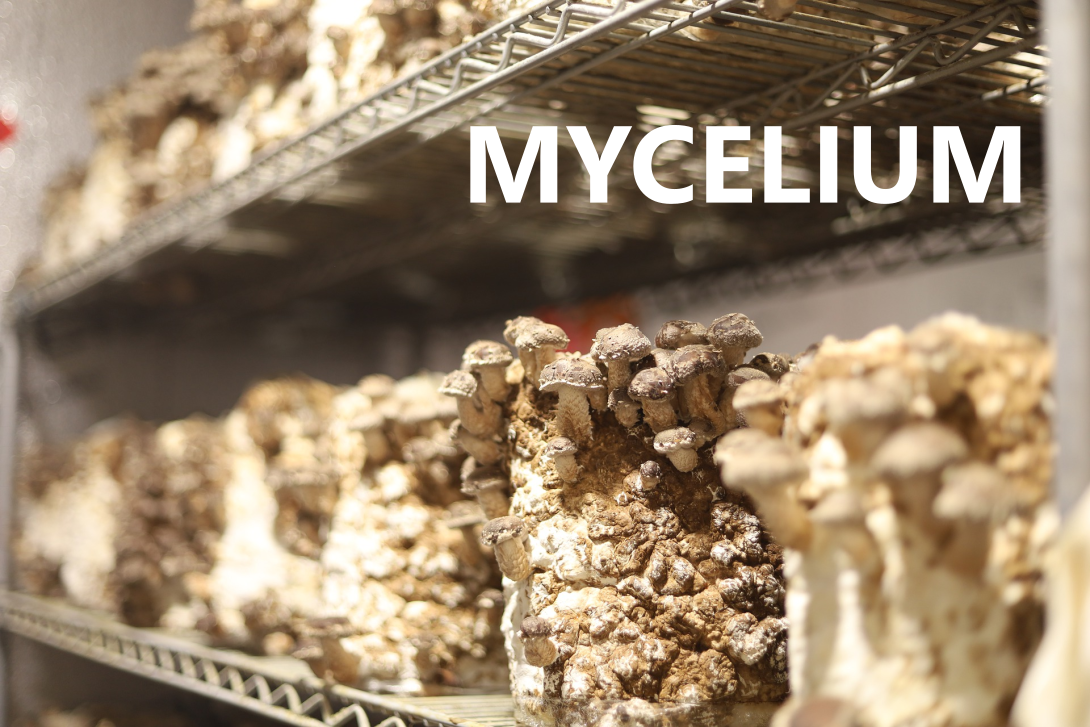Preliminary Research and Documentation (alternative)
The following research and documentation is meant to get this project started. Please consider this a work in progress. Significant work is needed to move this project forward.
Fungi
Fungi are found in nature as single-celled organisms, like yeast, and as multi celled organisms, like mushrooms. They are found in places where there is moisture. Mushrooms are made up of strands of cells called hyphae. Fungi play an important part in the decomposition process, breaking down complex organic matter into soluble nutrients, like simple sugars, nitrates and phosphates.
Mycelium
The main part of the fungus is the mycelium. Mycelium lives inside a substrate such as wood, and straw. They are root-like structures that mushrooms grow out of. Mushrooms are actually just a small visible part of the organism. Mushrooms do not reproduce like plants do. They reproduce by spores. These spores germinate to produce a mass of interwoven, single-cell wide, root-like structures known as hyphae. Collectively, masses of hyphae are known as the mycelium.
Mycelium is being used in wide variety of industries. Ranging from fashion and clothing, replacing Styrofoam and thermocol (polystyrene) in food and packaging industries, eco-friendly replacement for plastics, cardboards, bricks and has potential of being used in the marine and aviation sectors.
While it is hugely used in the food industry to grow mushrooms, mycelium itself is edible. It is now being used in gourmet menus and popularly known for its bacon-like taste.
Growing and Harvesting Mycelium
Mycelium spores are available in abundance in nature. They are also sold in grocery stores for mushroom growers. A small quantity is enough to grow a large masses of mycelium. The following are needed when growing and harvesting mycelium.
- Mycelium spores
- Water
- Growth Container
- Substrata material (saw wood, straw, agricultural waste, etc.)
- Mold
- Oven
- Gloves
- Plastic bag
- Protective Eyewear
The following steps briefly describe growing and harvesting mycelium:
- Boil the substrata to sterilize it. Boiling will kill harmful bacteria that may be present in the substrata material.
- Once the substrata is cooled down to room temperature, drain the water completely and allow it to dry.
- Sterilize the growth container.
- Mix a small quantity of mycelium spores with the sterilized substrata in the growth container.
- Spray a little water to keep the mixture moist.
- Cover the container with the plastic bag. This will help retain the mixture's moisture.
- Store this container in a cool and dark place. The mycelium starts to grow and convert the substrata to mycelium.
- Keep checking the mixture periodically to ensure that the mixture remains moist. A brick-sized mixture normally takes about a week to completely turn into mycelium.
- Once all the substrata is converted into mycelium, remove the mixture from the container and place it in the mold. This mycelium is edible and can be directly used for cooking.
- Keep a small quantity of the mycelium aside to grow the next batch.
- Leave the mycelium in the mold to take shape and harden for one week.
- After one week, the mycelium is ready for harvesting. Remove the mycelium from the mold.
- Place the mycelium in an oven and heat if for 2 minutes on 200° C.
- Remove the mycelium from the oven. It is now ready for use.
Mycelium is now being used in many industries like manufacturing to make boxes, protective packaging for servers, bottles, candles, etc. Mycelium is being referred to as the plastic of the future.
Licensing
This project is being developed as an open-source project with the following licensing:
- Software: GPL-3.0 - https://www.gnu.org/licenses/gpl-3.0.en.html
- Hardware, Design & other Intellectual Property: CC-BY-SA-4.0 - https://creativecommons.org/licenses/by-sa/4.0/

